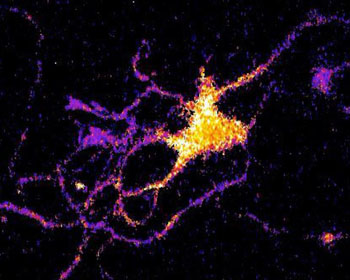Mutated Luciferase Generates Bright Light for Optogenetics Technique
By LabMedica International staff writers
Posted on 08 Nov 2016
A recent paper described a novel bioluminescent optogenetic technique that used a potent, mutated form of the enzyme luciferase to follow surges of calcium ions in cultured brain cells.Posted on 08 Nov 2016
Optogenetics refers to a technique that uses light (usually fluorescence) to control cells in living tissue, typically neurons, which have been genetically modified to express light-sensitive ion channels. This method utilizes a combination of techniques from optics and genetics to control and monitor the activities of individual neurons in living tissue – even within freely-moving animals – and to precisely measure the effects of those manipulations in real-time. Most current optical methods for monitoring Ca++ levels are based on fluorescence excitation that can cause unwanted stimulation of the optogenetic probe and other undesirable effects such as tissue autofluorescence. Luminescence is an alternate optical technology that avoids the problems associated with fluorescence.

Image: Individual neuron glowing with bioluminescent light produced by a new genetically engineered sensor (Photo courtesy of the Johnson Lab, Vanderbilt University).
Investigators at Vanderbilt University (Nashville, TN, USA) capitalized on a newly developed luciferase (NanoLuc) that is 100-150 times brighter than previous luciferases and which greatly expands the usefulness of luminescence technology. Their Ca++ sensor was genetically encodable to allow targeting to specific cell types and/or cellular loci, and employed this bright new luciferase to obtain excellent signal strength.
The investigators reported in the October 27, 2016, online addition of the journal Nature Communications that this sensor had a large dynamic range and partnered optimally with optogenetic probes. Ca++ fluxes that were elicited by brief pulses of light to cultured cells expressing melanopsin and to neurons-expressing channel rhodopsin were quantified and imaged with the BRET (bioluminescence resonance energy transfer) Ca++ sensor in darkness, thereby avoiding undesirable consequences of fluorescence irradiation.
"Most of the efforts in optical recording use fluorescence, but this requires a strong external light source which can cause the tissue to heat up and can interfere with some biological processes, particularly those that are light sensitive," said senior author Dr. Carl Johnson, professor of biological sciences at Vanderbilt University. "There is an inherent conflict between fluorescent techniques and optogenetics. The light required to produce the fluorescence interferes with the light required to control the cells. Luminescence, on the other hand, works in the dark!"
"For a long time neuroscientists relied on electrical techniques for recording the activity of neurons. These are very good at monitoring individual neurons but are limited to small numbers of neurons. The new wave is to use optical techniques to record the activity of hundreds of neurons at the same time. We have shown that the approach works," said Dr. Johnson. "Now we have to determine how sensitive it is. We have some indications that it is sensitive enough to detect the firing of individual neurons, but we have to run more tests to determine if it actually has this capability."
Related Links:
Vanderbilt University














